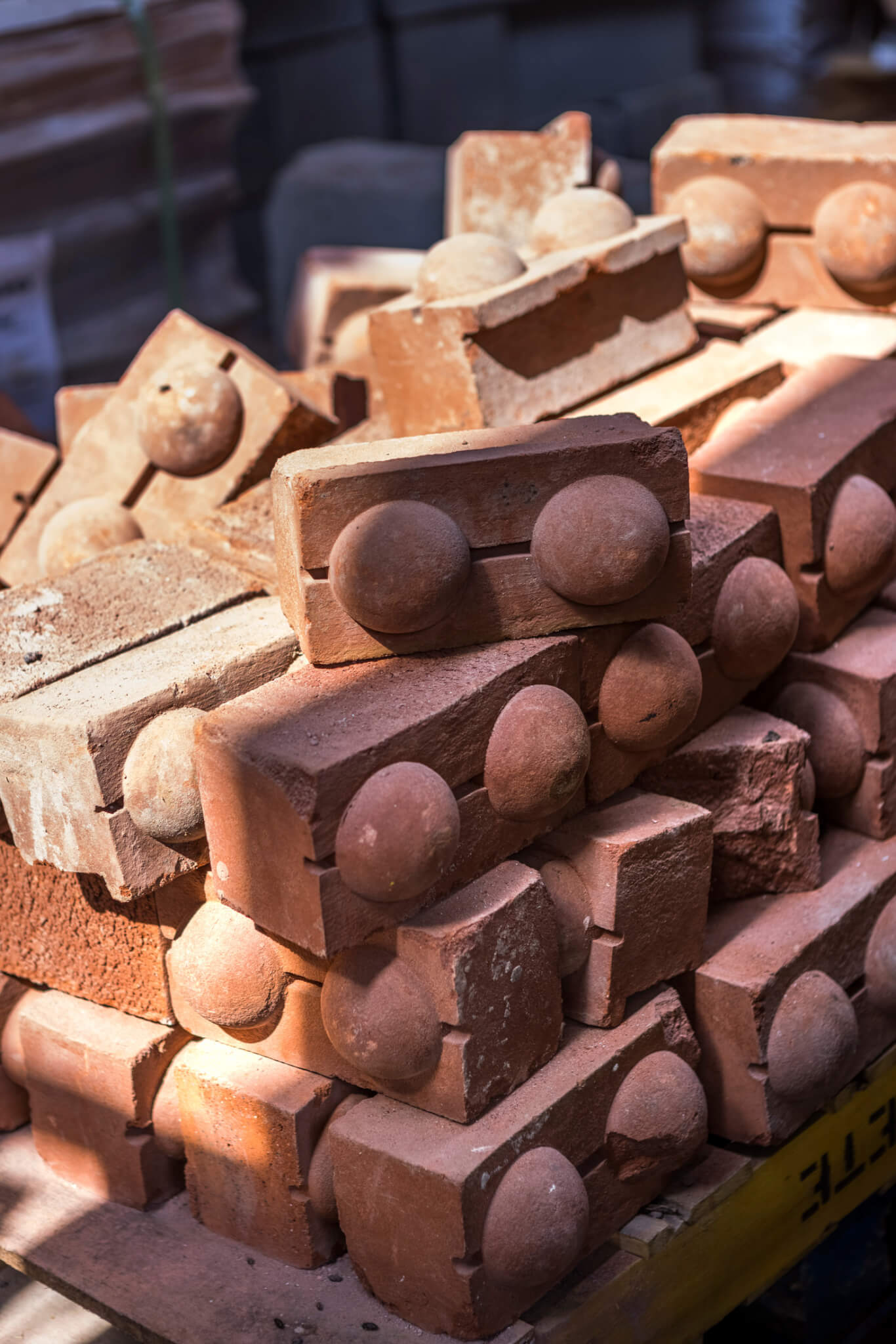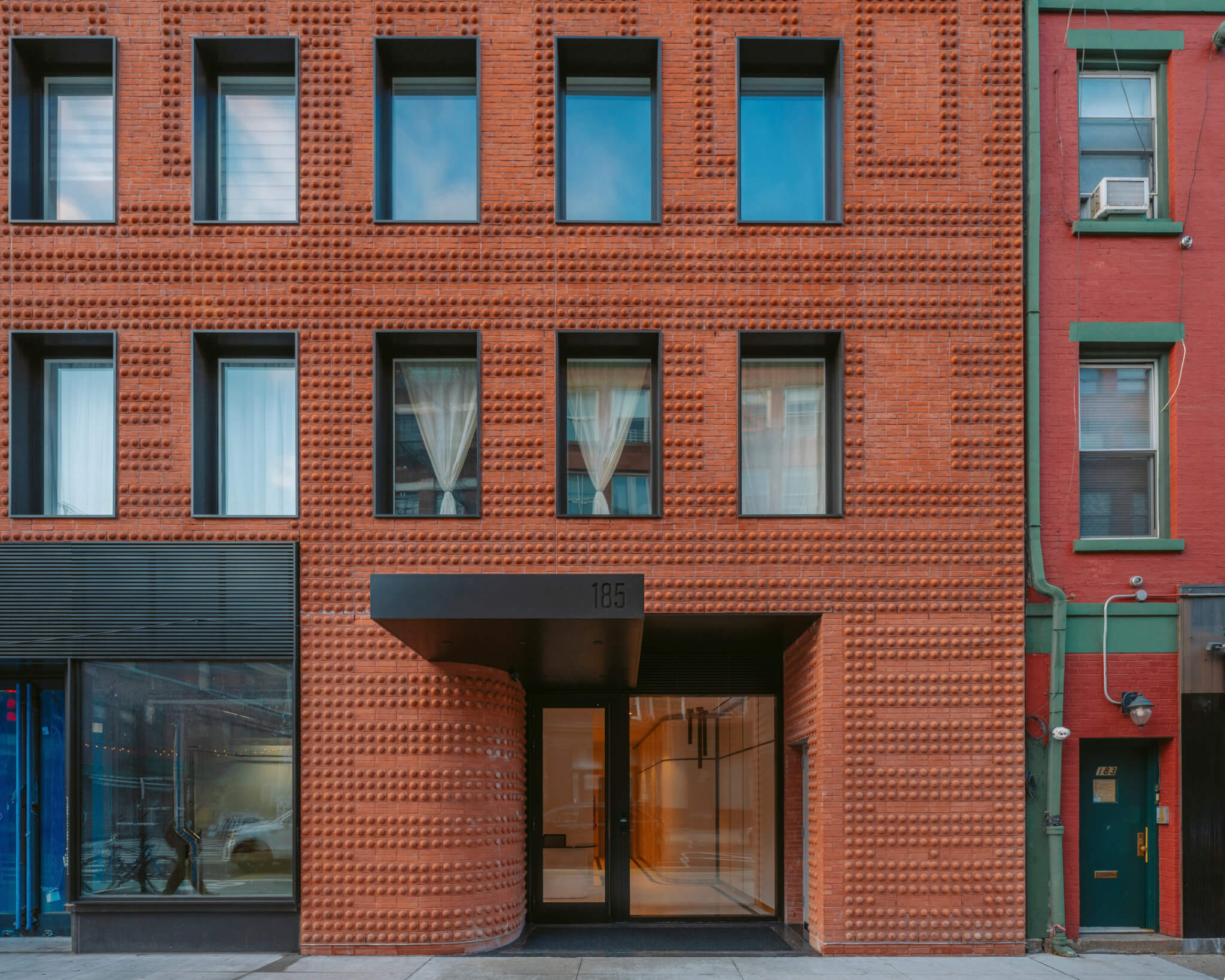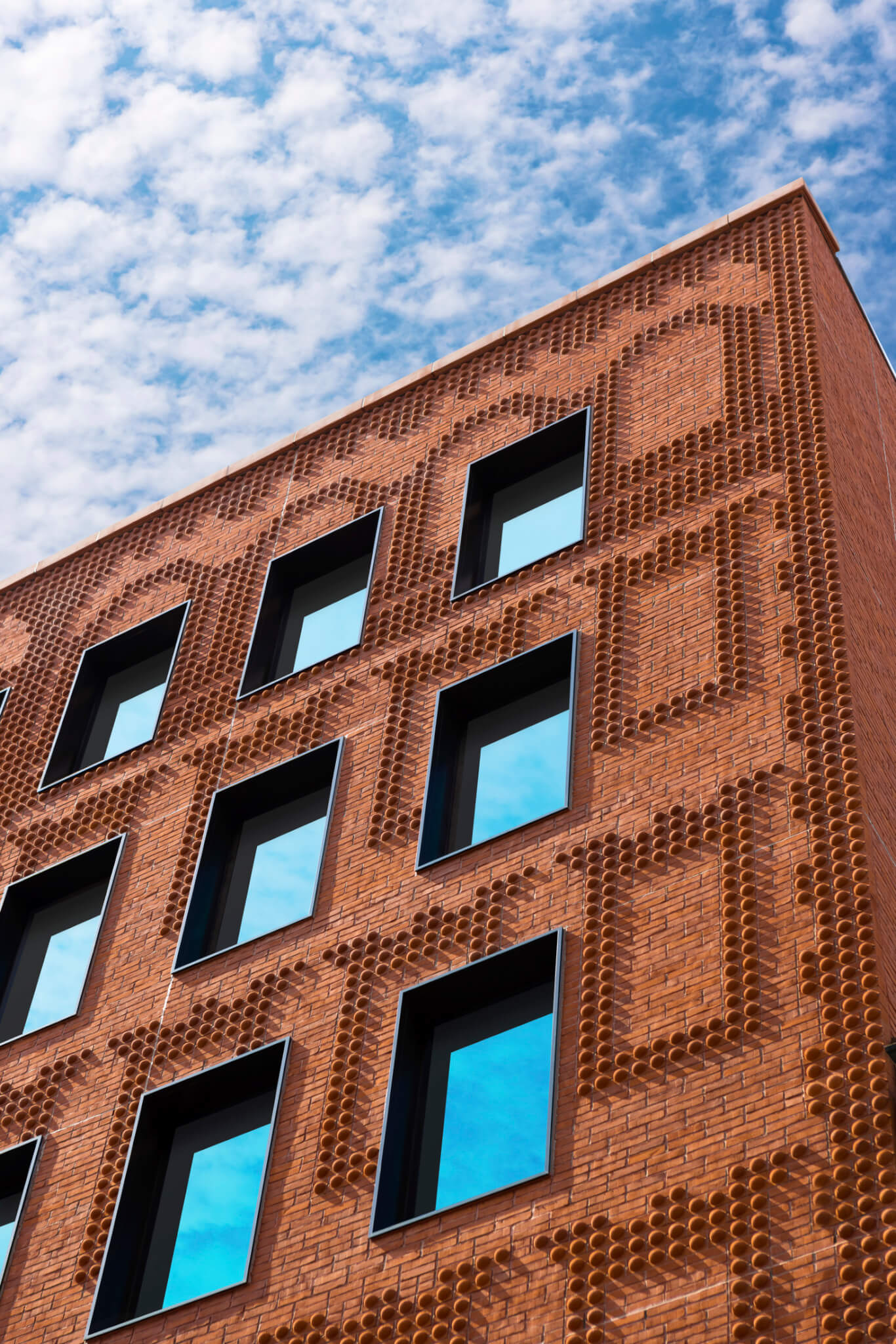Architect: Morris Adjmi Architects
Location: New York
In 1932, 98 percent of the heads of households in the area of New York City now variously known as Little Italy, Soho, or the Lower East Side were Italian emigrants, The New York Times reported. This wave of immigrants, who largely arrived in the U.S. from the 1880s through the 1920s, were preceded by the Italianate, a mid-19th-century tripartite style of ornamentation and brickwork that changes as the building rises.
Almost a century later, the area’s demographics have changed. But for the facade of the Grand Mulberry, a seven-story, 20-unit building at 185 Grand Street completed last year at the corner of the area’s famed Mulberry Street, Morris Adjmi Architects (MA) looked back to the Italianate for its local resonance. “Emulating this tradition,” according to the office’s press materials, “the Grand Mulberry’s facade pattern consists of banding at the building’s base on floors one to two, pediment windows on floors three to five, and arched windows and a cornice on floor six.”
The zoning required the seventh floor to step back, an opportunity Adjmi seized to create an extensive terrace for the penthouse, then wrap the entire unit and bulkhead in gray metal panels. The metal intervention throws into relief the building’s main feature: double-stacked running bonds of brick the color of old-fashioned red pavers. Manufacturer Glen-Gery hand-molded each brick, creating distinctive half-spherical bulbs that bring to mind sheets of fresh ravioli.

The swells of the bricks create patterns of light and shade across the exterior, while their arrangements seem like echoes of historical tenement windows. (The actual windows are large tilt-and-turns with extruded aluminum surrounds.) The brickwork creates “a spectral reference to the heritage of the neighborhood,” the office stated, a connection made through both pattern and hue.
The project’s extensive use of mosaics also has a vaguely Italian, if not Italianate, quality. They spill out of the lobby to form a brass logo on the sidewalk. Another series serve as elegant black-and-white wayfinding in the lobby and public hallways. Stacked white tile patterns define the primary bathrooms in all 20 units, and a custom mosaic floor details the penthouse’s powder room.

In an unusual development agreement, the project replaced a row of not-very-Italianate townhouses that previously housed the Italian American Museum. The museum sold its three buildings in 2013 for $13 million, along with a covenant to house its expanded ground-floor space in the new building, rent free, with a distinct Mulberry Street entrance.
Bricks are the key to the discreet insertion of a defining new building into an old neighborhood. “We worked closely with our masonry subcontractor, ARK Builders,” Morris Adjmi himself said in an interview provided to AN. “The unique masonry pattern—chosen for its ability to provide relief and add depth— could have presented a challenge during construction. But the level of detail put into the development of MA’s drawings and the quality of work provided by the subcontractor allowed for a smooth construction process.”

The finished result gains resonance through reference to the neighborhood’s poor, immigrant roots, while its pricing—ranging from second-floor one-bedrooms selling for $1.295 million to penthouse units marketed for $7.35 million—is altogether contemporary.
The Grand Mulberry’s exterior is “an example of how modern concepts can be applied to traditional methods and materials to develop unique and intricate facade designs,” Adjmi said.
Jesse Dorris is a writer in New York City and host of Polyglot, a show on WFMU.
Project Specifications
- Architect: Morris Adjmi Architects
- Location: New York
- Interior design: Morris Adjmi Architects
- Museum architect: op.Architecture + Landscape
- Civil engineer: Sullivan Group Design
- MEP/FP: ABS Engineering
- Lighting: Delta Light
- Facade consultant: Buro Happold Engineering
- General contractor: Empire State Contractors
- Masonry subcontractor: ARK Builders
- Brick manufacturer: Glen-Gery











